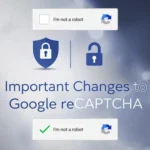Protecting Your Business Email And The Importance of Email Authentication

In today’s digital age, email remains the primary communication channel for businesses. However, this essential tool is increasingly at risk of misuse. As a business owner or director, you may not be familiar with technical terms like DMARC or SPF, but understanding basic email security is crucial for safeguarding your company’s reputation and data.
The Hidden Dangers to Your Business Email
Did you know that anyone can send an email that appears to come from your company’s domain? Without adequate protection, cybercriminals can:
- Send phishing emails that mimic your business communications
- Harm your company’s reputation when recipients receive fraudulent messages
- Impersonate your executives to request payments or sensitive information
- Reduce the deliverability of your legitimate emails
These threats are real. Email spoofing and phishing attacks target businesses of all sizes, potentially leading to financial losses and damaged client relationships.
Email Authentication: Verifying Your Digital Identity
Just as you wouldn’t conduct business without proper identification in the physical world, your business emails need authentication in the digital realm. This is where email authentication protocols come into play.
Understanding SPF, DKIM, and DMARC
These terms may sound technical, but they are simply standards that verify your emails are genuinely from you:
- SPF (Sender Policy Framework) specifies which email servers can send emails from your domain. Think of it as an approved list of messengers authorised to speak on your company’s behalf.
- DKIM (DomainKeys Identified Mail) adds a digital signature to your emails, ensuring they haven’t been altered during transit. It’s like sealing an envelope with your company’s unique wax seal.
- DMARC (Domain-based Message Authentication, Reporting & Conformance) combines SPF and DKIM, creating a comprehensive policy that instructs receiving servers on how to handle emails that fail authentication. It also provides reports on who is sending emails using your domain.
Why Business Leaders Should Prioritise Email Authentication
As a business owner or director, you might wonder why these technical standards matter. Here are compelling reasons:
- Protect your brand reputation: Fraudulent emails sent from your domain can erode trust in your communications.
- Improve email deliverability: Properly authenticated emails are more likely to reach inboxes rather than spam folders.
- Reduce financial fraud risk: Business Email Compromise (BEC) attacks often involve domain spoofing and can result in significant financial losses.
- Safeguard sensitive information: Phishing emails can trick employees or clients into sharing confidential data.
- Meet compliance requirements: Many industries now mandate email authentication as part of their security standards.
Introducing Our Managed Email Protection Service
Setting up and maintaining email authentication protocols requires technical expertise that many small and medium-sized businesses lack in-house. That’s why we’ve developed our Managed Email Assurance service.
Our service:
- Implements SPF, DKIM, and DMARC protocols for your email domain
- Continuously monitors your email authentication status
- Provides regular reports on email security threats
- Ensures only legitimate emails are sent using your domain
- Improves the deliverability of your genuine emails
The Cost of Inaction
Without proper email authentication, your business remains vulnerable. Consider these potential consequences:
- A successful phishing attack could cost your business thousands of pounds
- Reputation damage could lead to loss of clients and business opportunities
- Your legitimate emails might increasingly land in spam folders, hampering communication
- You could unknowingly become an accomplice in cyberattacks against your clients or partners
Relevant Links
For more information on email authentication best practices, you can refer to these resources:
- Best Practices: Email Authentication – SPF, DKIM, and DMARC – Internet Society
- Best Practice for Email Authentication – Optimal Ways to Deploy SPF, DKIM and DMARC – Cisco
- SPF, DKIM, DMARC: The 3 Pillars of Email Authentication | Higher Logic
- Best Authentication Practices for Email Senders – dmarc.org
- What are DMARC, SPF and DKIM? How to master email security with these protocols | CSO Online





Comments